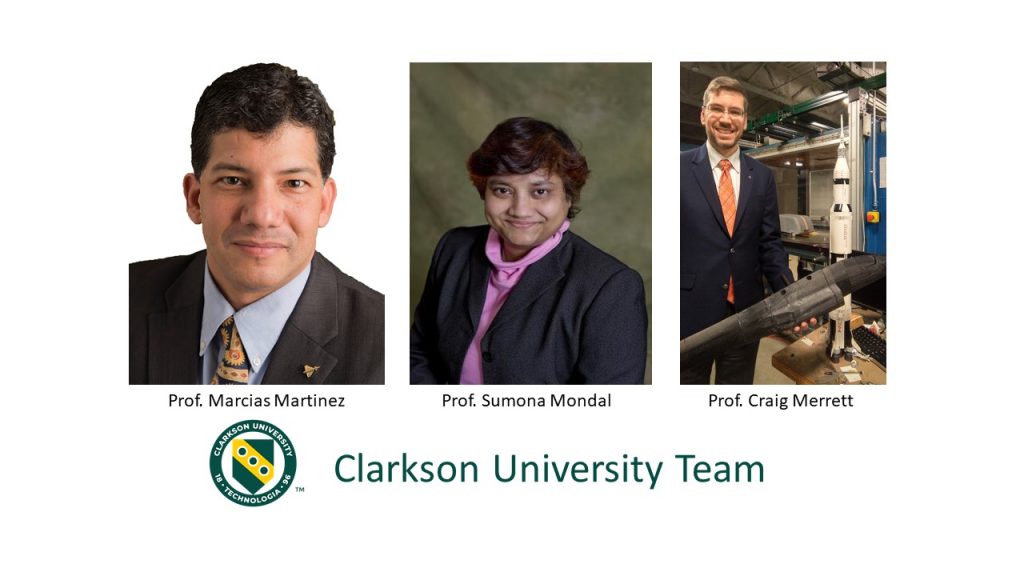With an $800,000 grant from the Office of Naval Research (ONR) Advanced Naval Platforms Division, Clarkson University Prof. Marcias Martinez (Principal Investigator) and Prof. Craig Merrett (Co-PI) from the Department of Mechanical and Aeronautical Engineering in collaboration with Prof. Sumona Mondal (Co-PI) from the Department of Mathematics will begin work on developing mathematical physics-based models for determining the time to failure of bonded joints.

Adhesive-bonded joints are of interest for use in connection of U.S. Navy aircraft and vessel structural components. However, these joints are not currently in use, despite their potential benefits. Mechanical joints are most commonly used, but these joints are known to produce stress concentration regions, moisture ingress areas, and increased structural weight. Reliable, adhesively bonded joints, with no metal fasteners, would reduce structural weight and the manufacturing and operational costs of Navy assets. Widespread use of primary structure adhesive joints is hampered by the current inability to predict and measure the adhesive bond strength. As a result, industry and the U.S. Department of the Navy demands for lower structural weights and reduced part counts on their assets must compete with the high safety standards demanded by the certification authorities.
This fundamental research will be performed in collaboration with members of the Carderock Division,
U.S. Naval Surface Warfare Center in Maryland. Our Clarkson team is excited to bring their expertise in statistics, viscoelasticity, viscoplasticity, computational and experimental mechanics and non-destructive inspection techniques to assist the U.S. Navy in the development and improvement of novel structural joining methods. The team will be engaged with other NATO Science and Technology colleagues in the development of life assessment techniques of these critical assets. Through this ONR grant, Prof. Mondal plans to build multidimensional prediction models for static strength that could comprehensively identify the important factors and their complicated interactions, thus enabling the advancement of our understanding of the stochastic nature of adhesives through Bayesian analyses.
Furthermore, the funding received will allow Prof. Martinez and Prof. Merrett to hire a full time Ph.D. student, manufacture a stress-relaxation rig, conduct computational simulations, and complete extensive experiments at both the Holistic Structural Integrity Process Laboratory (HolSIP) and the Aero-Servo-Thermo-Viscoelasticity Laboratory for the next 5 years.